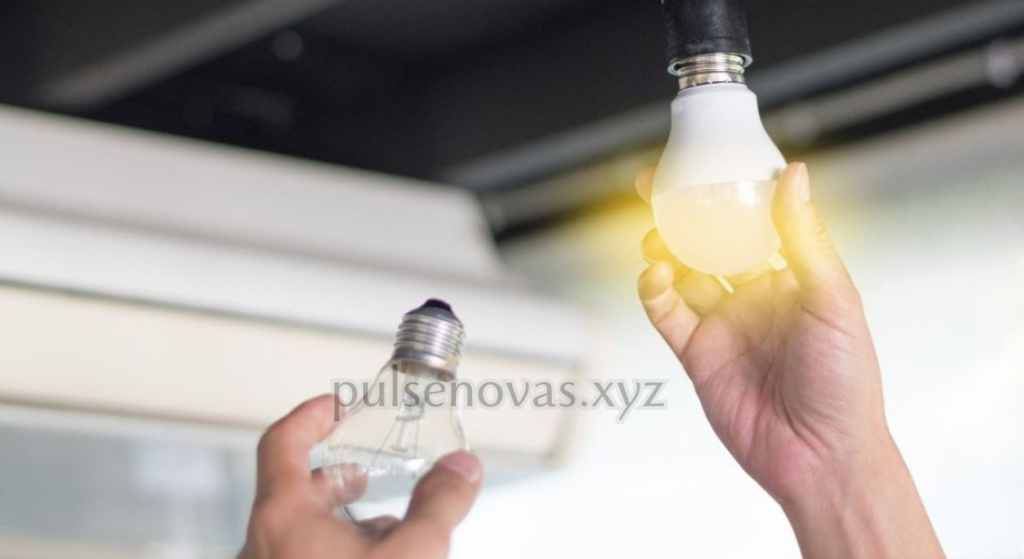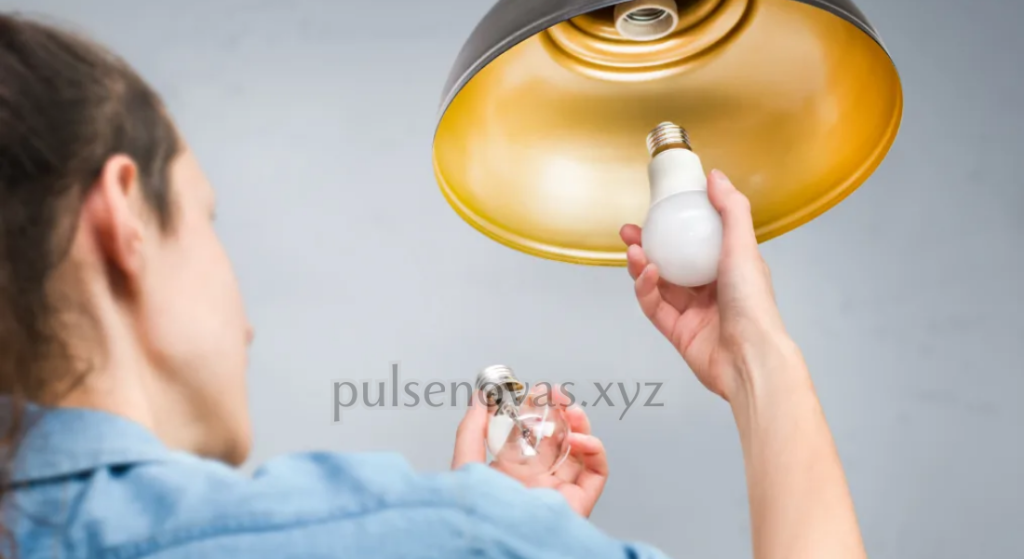blog
Upgrade to Energy-Efficient Smart Bulbs for a Smarter Home and Significant Savings on Electricity
In recent years, the shift towards energy-efficient lighting has become one of the most effective ways to reduce electricity consumption and save money. The introduction of smart bulbs has taken this trend to new heights, offering homeowners not only improved energy efficiency but also greater control over their lighting systems. If you’re looking for a way to make your home smarter, more convenient, and more cost-effective, upgrading to energy-efficient smart bulbs is one of the best decisions you can make.
In this guide, we’ll dive into the benefits of smart bulbs, explain how they help save electricity, and explore why they are a great investment for both the environment and your budget. We’ll also look at how smart lighting systems contribute to creating a smarter home by offering personalized experiences, reducing carbon footprints, and integrating seamlessly with home automation technologies.
Why Choose Smart Bulbs for Your Home?
As the world moves toward more sustainable living, smart lighting solutions have become an essential part of the green home movement. Smart bulbs are designed to optimize energy consumption, allowing you to enjoy advanced lighting without compromising on quality or convenience. Below are some key reasons why upgrading to energy-efficient smart bulbs is a smart choice for any home:
- Energy Efficiency: One of the primary reasons people opt for smart bulbs is their energy-saving capabilities. Smart bulbs use LED technology, which is much more efficient than traditional incandescent or fluorescent bulbs. LEDs consume less power while producing the same amount of light, leading to significant reductions in electricity bills. In fact, LED bulbs use up to 85% less energy compared to traditional incandescent bulbs, which means substantial savings over time.
- Cost Savings on Electricity: Smart bulbs help you save money in two key ways: by using less energy and by offering automated control. Many smart bulbs come with features that allow you to program them to turn off when not in use or dim to save energy. Over time, these small adjustments can add up to significant savings on electricity bills.
- Longer Lifespan: One of the most notable advantages of energy-efficient smart bulbs is their longevity. While traditional bulbs may last only 1,000 hours, LED smart bulbs can last up to 25,000 hours or more. This means fewer replacements, which reduces waste and saves you even more money in the long run. Plus, because smart bulbs use less power, they generate less heat, which also contributes to their extended lifespan.
- Personalized Lighting: Smart bulbs allow you to create the perfect lighting environment for every occasion. With just a tap on your smartphone or a voice command, you can adjust the brightness and color of your bulbs to match your mood or activity. Whether you’re hosting a dinner party, working late, or unwinding after a long day, smart bulbs let you set the ambiance with ease.
- Remote Control and Automation: One of the key features of smart bulbs is their remote control capabilities. Using a smartphone app or voice assistant, you can control your bulbs from anywhere, whether you’re inside the house or miles away. Set schedules for when lights should turn on or off, adjust the brightness, or even control your lights using voice commands through Alexa, Google Assistant, or Siri. This level of automation not only enhances convenience but also contributes to energy savings by ensuring lights aren’t left on unnecessarily.
Smart Bulbs and Their Environmental Benefits

Switching to energy-efficient smart bulbs doesn’t just benefit your wallet—it also has a positive impact on the environment. By consuming less energy, smart lighting systems reduce the overall demand for electricity, which helps to lower carbon emissions. Here’s how:
- Lower Carbon Footprint: The production of electricity—especially when it comes from non-renewable sources like coal and natural gas—creates significant carbon emissions. By using less energy, smart bulbs help to reduce the amount of electricity needed, which in turn decreases greenhouse gas emissions. Over time, this contributes to a reduced carbon footprint, which is crucial for combating climate change.
- Reducing E-Waste: Traditional incandescent and compact fluorescent bulbs often end up in landfills, where they contribute to e-waste. Smart bulbs, on the other hand, have a much longer lifespan and are designed to be more durable. Because they need to be replaced less frequently, there’s less waste generated, which helps reduce the environmental impact of electronic waste.
- Sustainable Materials: Many smart bulb manufacturers use sustainable materials in their production process. By choosing a high-quality smart bulb brand, you’re supporting the use of materials that are safer for the environment and promoting eco-friendly manufacturing practices. Moreover, some brands have recyclable components, which further reduces their environmental impact.
How Smart Bulbs Work to Save You Electricity
The beauty of smart bulbs lies in their ability to help you conserve energy while still providing high-quality lighting. Let’s explore how they achieve this:
- Dimmer Functionality: Smart bulbs allow you to adjust the brightness according to your needs. Instead of leaving your lights at full brightness all the time, you can easily dim them to save energy. Lowering the brightness of your smart bulbs when they are not needed at full intensity can lead to noticeable reductions in electricity usage.
- Scheduling and Timers: One of the most practical features of smart lighting is the ability to set schedules and timers. For example, you can program your smart bulbs to turn off automatically after a certain period or to turn on just before you get home. This ensures that lights aren’t left on unnecessarily and that they’re always on when you need them.
- Motion Sensors: Some smart bulbs are equipped with motion sensors that automatically turn lights on when someone enters a room and turn them off when the room is empty. This is particularly useful for high-traffic areas like hallways, bathrooms, or kitchens, where lights can easily be left on unnecessarily. With motion sensors, you don’t have to worry about remembering to turn off the lights every time you leave a room.
- Integration with Smart Home Systems: Many smart bulbs are compatible with home automation platforms like Amazon Alexa, Google Home, and Apple HomeKit. This allows you to integrate your lighting system into a smart home network, where you can control your lights alongside other smart devices like thermostats, security cameras, and speakers. With home automation, your smart bulbs can adjust based on your daily routines, ensuring energy efficiency without the need for manual adjustments.
Choosing the Right Smart Bulb for Your Home
There are a variety of smart bulbs on the market, each with its own set of features and specifications. When selecting the right bulb for your home, consider the following factors:
- Brightness: Choose bulbs with the appropriate brightness level for your needs. Smart bulbs come in various lumens ratings, so look for bulbs that provide enough light for each room in your home without wasting energy.
- Color Temperature: Smart bulbs come in different color temperatures, from warm yellow tones to cool white or even color-changing options. Consider the mood you want to create in each room and choose bulbs that match your preferences.
- Compatibility: Make sure the smart bulb you choose is compatible with your existing smart home system or app. Most major brands support platforms like Amazon Alexa, Google Assistant, and Apple HomeKit for seamless integration.
- Cost: While smart bulbs may have a higher initial cost compared to traditional bulbs, the energy savings and long lifespan will quickly make up for the investment. Look for bulbs that offer a balance of quality, performance, and affordability.
Conclusion: Upgrade to Smart Bulbs for a Smarter, More Sustainable Home
Switching to energy-efficient smart bulbs is one of the easiest and most effective ways to reduce your electricity consumption while improving your home’s lighting system. With their advanced features, energy-saving capabilities, and environmental benefits, smart bulbs are a smart investment for anyone looking to create a smarter home and save money in the long run.
By upgrading to smart bulbs, you not only contribute to lowering your carbon footprint but also enjoy the convenience of a customized lighting experience that fits your lifestyle. Whether you’re a tech enthusiast, a digital nomad, or simply someone looking for a way to make your home more efficient, smart bulbs offer an unparalleled combination of performance, savings, and sustainability. Start upgrading today and enjoy the benefits of a smarter home and significant savings on electricity bills.

